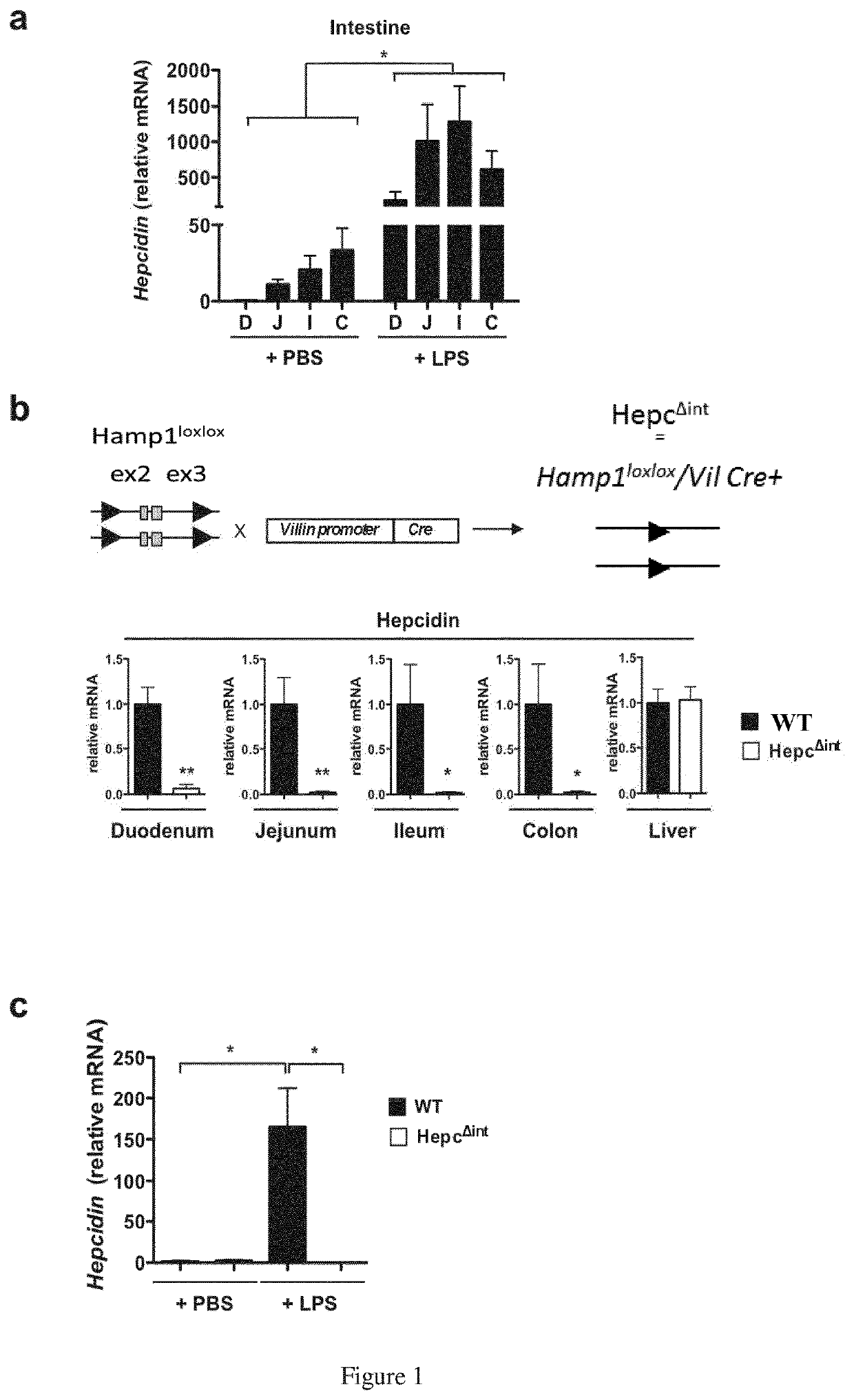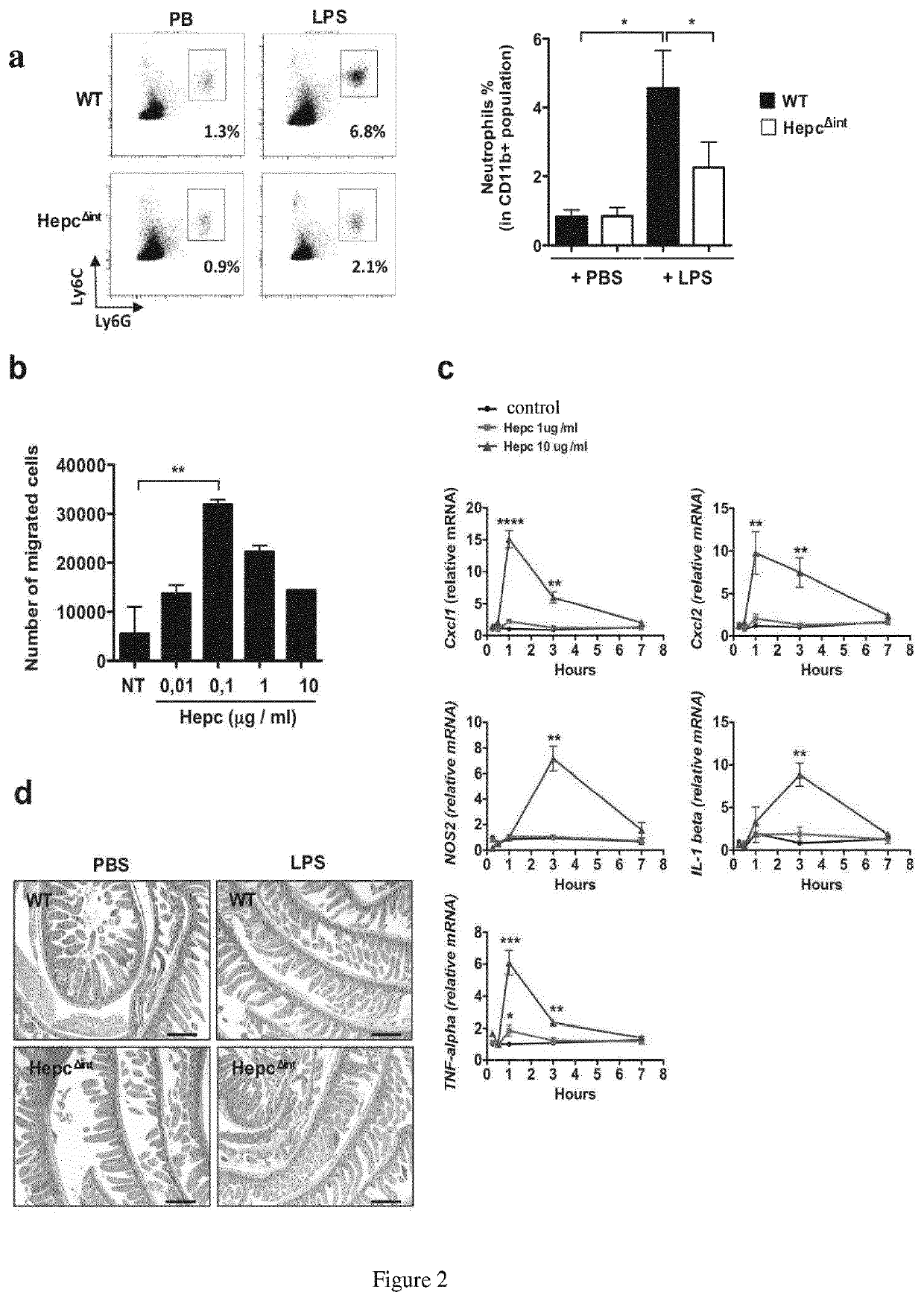Hepcidin antagonists for use in the treatment of inflammation
a technology of hepcidin and antagonist, which is applied in the direction of immunoglobulins against animals/humans, immunoglobulins against hormones, synthetic polymeric active ingredients, etc., can solve the problem of dysregulated inflammation and severe consequences
- Summary
- Abstract
- Description
- Claims
- Application Information
AI Technical Summary
Benefits of technology
Problems solved by technology
Method used
Image
Examples
examples
[0129]Hepcidin is a 25 amino acid peptide demonstrated to be the key iron regulatory hormone, produced by the liver, capable of blocking iron absorption from the duodenum and iron release from macrophages1. Here, is disclosed a completely new role of hepcidin in the intestine. The gut is the motor of the systemic inflammatory response in critical illness but the mechanisms by which it acts is unclear2. While, during acute inflammation, hepcidin has been shown to be poorly induced in the liver3,4, it has been found here that it was highly produced by the intestinal epithelium. Our results showed that gut hepcidin acts both as a neutrophil chemoattractant protein and a proinflammatory molecule. Generation of intestinal specific hepcidin KO mice demonstrated that gut hepcidin was required for the recruitment of intestinal neutrophils and the induction of chemokines (CXCL1, CXCL2) and proinflammatory molecules by the macrophages. Importantly, hepcidin is critical to the systemic product...
PUM
| Property | Measurement | Unit |
|---|---|---|
| particle size | aaaaa | aaaaa |
| pH | aaaaa | aaaaa |
| pH | aaaaa | aaaaa |
Abstract
Description
Claims
Application Information
 Login to View More
Login to View More - R&D
- Intellectual Property
- Life Sciences
- Materials
- Tech Scout
- Unparalleled Data Quality
- Higher Quality Content
- 60% Fewer Hallucinations
Browse by: Latest US Patents, China's latest patents, Technical Efficacy Thesaurus, Application Domain, Technology Topic, Popular Technical Reports.
© 2025 PatSnap. All rights reserved.Legal|Privacy policy|Modern Slavery Act Transparency Statement|Sitemap|About US| Contact US: help@patsnap.com



